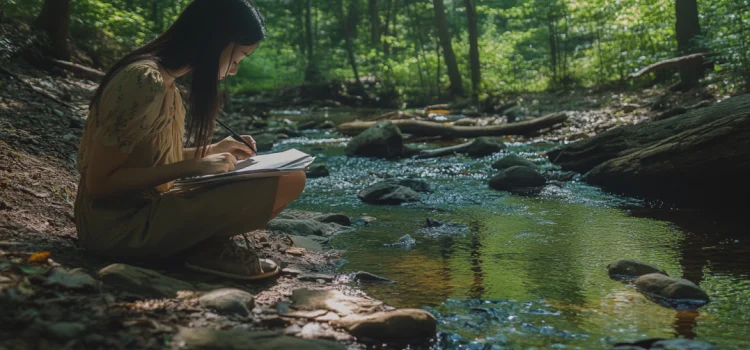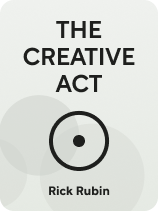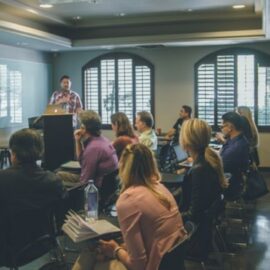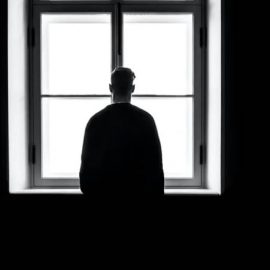

This article is an excerpt from the Shortform book guide to "The Creative Act" by Rick Rubin. Shortform has the world's best summaries and analyses of books you should be reading.
Like this article? Sign up for a free trial here.
Want to know where to find inspiration? How can nature inspire creativity?
Author Rick Rubin encourages you to stay open to inspiration as life itself offers endless fodder for creativity. By paying attention to the world around you, you continually gather information that might serve as source material for later work.
Here are some ways to find inspiration for your creative projects.
1. Get Outside
Rubin suggests that immersing yourself in nature can stimulate creativity and provide a sense of clarity and inspiration that is often hard to find in urban or indoor environments. He emphasizes that nature acts as a catalyst for creative thinking by offering an escape from the distractions of daily life and fostering a space for reflection and introspection.
(Shortform note: Attention Restoration Theory (ART) offers an explanation for how nature boosts creativity. ART suggests that natural environments help restore the mind’s ability to focus and think clearly, which often gets depleted in busy urban or indoor settings. When you immerse yourself in nature, you engage with an environment that inherently captures your attention but in an effortless way, allowing your higher cognitive functions to recover and rejuvenate. This mental refresh can lead to increased creativity as it provides the space and clarity you need to generate fresh ideas and perspectives. So next time you need a creative boost, stepping into a natural setting might be just what your brain needs.)
Rubin offers practical ways you can integrate nature into your creative practice, including taking walks to clear your mind, using natural elements as direct sources of inspiration, or simply opening yourself up to the sensory experiences offered by the environment.
(Shortform note: By incorporating nature into the creative process as Rubin suggests, you open the gateway to innovative practices like biomimicry, the practice of learning from and mimicking strategies found in nature to solve human design challenges. For example, studying the structure of a lotus leaf has led to the development of water-repellent surfaces, while examining the efficient movement of birds has influenced designs in aviation. Biomimicry bridges biology with technology and design, aiming to create innovations that are sustainable and efficient by emulating nature’s time-tested patterns and strategies.)
2. Connect With People
Rubin emphasizes the importance of human connection as a source of inspiration. He suggests that engaging with others, whether through conversation, observation, or collaboration, can spark new ideas and perspectives. He encourages you to:
- Listen actively to others’ stories and experiences.
- Observe human behavior and interactions in various settings.
- Engage in discussions with people from diverse backgrounds.
- Collaborate with other artists or creators to cross-pollinate ideas.
For example, if you’re a photographer taking pictures of a small town, Rubin would encourage you to spend time in local cafes, attend community events, and strike up conversations with residents. These interactions could lead to intimate portraits and candid moments that tell a richer story of the town’s character and its people. The resulting photo series wouldn’t only showcase the physical aspects of the town but also capture its essence through the stories and personalities of its inhabitants.
| Connecting in a Digital World Rubin’s advice can be implemented in a digital context. Virtual platforms allow for listening to others’ stories through podcasts, webinars, or online forums. Social media and video calls enable observation of human behavior and interactions. Digital forums and online communities can facilitate discussions with people from diverse backgrounds. Additionally, collaboration tools like shared documents, video conferencing, and digital art platforms make it possible to work with other creators remotely. However, are virtual interactions as impactful as face-to-face ones? Research suggests that in-person communication is linked to a higher quality of life compared to virtual communication. Several factors contribute to this: the absence of nonverbal cues in digital formats, potential online misrepresentation, and distractions from technology during live interactions. While online interactions might be a more convenient source of human connection, they might not provide the same level of emotional satisfaction and social fulfillment as in-person encounters. Therefore, while Rubin’s principles can still thrive online, balancing digital and face-to-face interactions may be key to maximizing the depth and quality of inspiration and connection. |
By connecting with people in these ways, you expose yourself to different viewpoints, emotions, and life experiences that can enrich your creative work and provide authentic material for your art. Rubin believes that these human interactions can lead to unexpected insights and help artists tap into universal themes that resonate with audiences.
(Shortform note: The concept of the “adjacent possible” offers a framework for understanding how these connections with people can lead to innovation and artistic breakthroughs. Developed by theoretical biologist Stuart Kauffman, the adjacent possible theory posits that at any moment, there exists a set of potential next steps or innovations that are directly accessible from our current state of knowledge and experience. In the context of art and creativity, this suggests that new ideas often emerge from novel combinations of existing elements rather than from isolated, radical leaps. As you engage with diverse viewpoints and experiences, you continually expand your adjacent possible, opening up new avenues for creativity.)
3. Seek Out Art
Rubin strongly advocates immersing yourself in various forms of art as a means of stimulating your creativity. Rubin suggests that the act of engaging with art, even if it’s outside your primary medium, can broaden your creative palette, inspire new techniques or approaches in your own work, challenge your preconceptions about art and creativity, and trigger unexpected connections and ideas.
For example, imagine you’re a traditional oil painter who attends a contemporary dance performance. You might be inspired by the dancers’ use of space, the fluidity of their movements, and the interplay of light and shadow on their bodies, which in turn inspire you to incorporate more dynamic, flowing elements into your paintings and experiment with new ways of depicting motion on canvas.
(Shortform note: Rubin’s idea that engaging with various art forms can enhance creativity isn’t only insightful but also historically grounded. Take Leonardo da Vinci, for instance, whose curiosity and engagement in diverse fields, ranging from anatomy to engineering, profoundly influenced his artistic output, leading to anatomically precise drawings that were ahead of his time. Similarly, Steve Jobs’s exposure to calligraphy classes inspired him to integrate beautiful typography into Apple’s computers, fundamentally changing the aesthetics of technology interfaces. Both figures exemplify how stepping beyond your primary field can lead to transformative ideas that reshape your field.)

———End of Preview———
Like what you just read? Read the rest of the world's best book summary and analysis of Rick Rubin's "The Creative Act" at Shortform.
Here's what you'll find in our full The Creative Act summary:
- Where creativity comes from and why it matters
- How to take inspiration from anywhere and everywhere
- A music producer’s advice for enhancing your creativity






